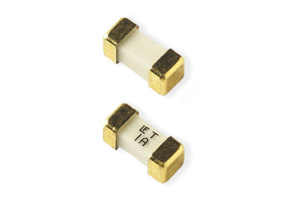Littelfuse patch fuses, with their advanced design concepts and manufacturing technologies, have demonstrated unique advantages in the field of circuit protection, particularly in high-density electronic devices, automated production, and harsh environmental applications. The following is a detailed analysis of its core advantages:
1、 Miniaturization and high-density integration
Ultra thin and compact design
Thin film patch series (such as 0429, 0430): with a thickness of only 0.6mm, the size can be as small as 0402 (1.0 × 0.5mm), suitable for micro devices such as smart watches and TWS earphones, significantly saving PCB space.
Nano ² series (such as 0443, 0448): The flat package structure supports high-density layout and is suitable for motherboard design of consumer electronics products such as smartphones and tablets.

Adaptability of automated production
Surface mount (SMD) technology is compatible with SMT production lines, improving assembly efficiency, reducing labor costs, and suitable for large-scale electronic manufacturing.
2、 High performance protection features
High breaking capacity and surge tolerance
Nano ² 415 series: With a breaking current of up to 1500A at 277V, it can withstand extreme short circuits or lightning surges and is suitable for high impact scenarios such as industrial power supplies and charging piles.
Ceramic patch fuse (such as 501 series): Made of ceramic material, it is heat-resistant and has a fast breaking speed, protecting precision circuits from instantaneous overcurrent damage.
Precise melting characteristics
Fast break type (such as 0603FA series): millisecond level response speed, protecting sensitive ICs and sensors;
Slow break type (such as 1206SL series): able to withstand short-term surge currents, suitable for motor starting or power filtering circuits.
Self recovery function (PPTC patch fuse)
0603L and 0805L series: Automatic reset after overcurrent is achieved through temperature sensitive materials, reducing equipment downtime and maintenance. They are widely used in scenarios such as USB ports and lithium battery protection.
3、 Wide environmental adaptability
Stable operation over a wide temperature range
The working temperature range covers 55 ° C to+150 ° C (such as ceramic fuse 501 series), suitable for extreme temperature environments such as automotive engine compartments and industrial equipment.
Anti vibration and corrosion resistance
The surface mount packaging structure reduces the impact of mechanical stress. For example, the 823A series for automotive electronics has passed AECQ200 certification and is resistant to vibration and high humidity environments, ensuring the long-term reliability of in vehicle systems.
Environmental compliance
The entire series complies with RoHS and lead-free standards, meets EU and global environmental regulations, and is suitable for the design needs of green electronic products.
4、 Multi domain application coverage
Consumer Electronics
0603/0805 patch fuses are used in smartphones and laptops to prevent overloading of the charging circuit;
Smart home devices such as routers and IoT modules use thin film patch series to achieve lightweight design.
Automotive Electronics
High voltage SMD fuses (such as 823A series) support electric vehicle 800V/1000V DC systems, protecting BMS (battery management system) and OBC (on-board charger).
Industry and Energy
Nano ² series with high surge tolerance is used in industrial frequency converters and photovoltaic inverters to resist grid fluctuations;
The data center power module uses patch fuses to achieve a compact layout and improve heat dissipation efficiency.
5、 High cost-effectiveness and long lifespan
Reduce system costs
Self recovering PPTC reduces replacement frequency, and the design of disposable patch fuses with long lifespan (such as 1000 cycles of testing) reduces maintenance costs.
Optimize circuit design
Low internal resistance models (such as Lo ρ series PPTC) reduce power consumption, improve energy efficiency, and are suitable for high-performance scenarios such as 5G base stations and servers.
The core advantage of Lite patch fuses lies in the deep integration of miniaturized packaging, precise protection performance, and full scene adaptability, providing highly reliable and efficient circuit protection solutions for modern electronic devices. Its technological highlights include ultra-thin design adapted to the trend of miniaturization, high breaking capacity to cope with harsh environments, self recovery function to reduce operation and maintenance costs, and wide coverage of diverse needs from consumer electronics to new energy fields. Whether it is wearable devices that pursue ultimate space utilization or industrial systems with high voltage and high impact, Lite patch fuses can provide targeted protection strategies and become the preferred component for high-density electronic design.
